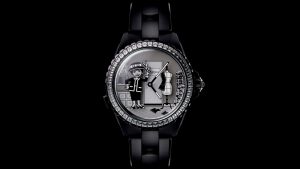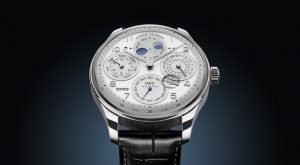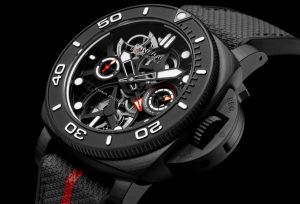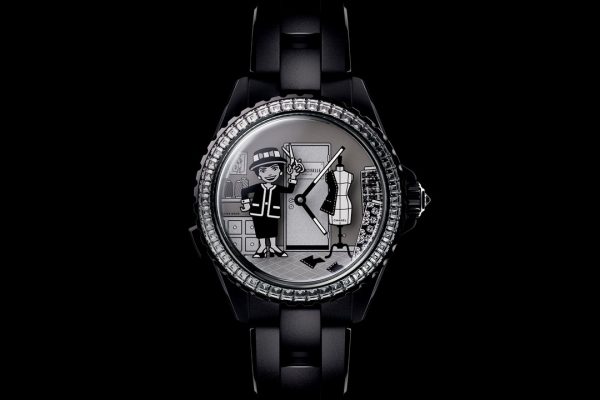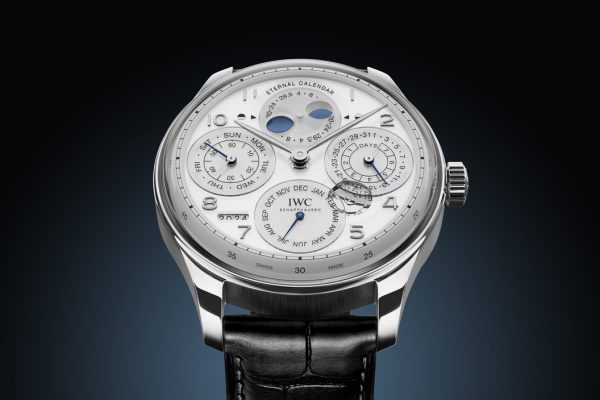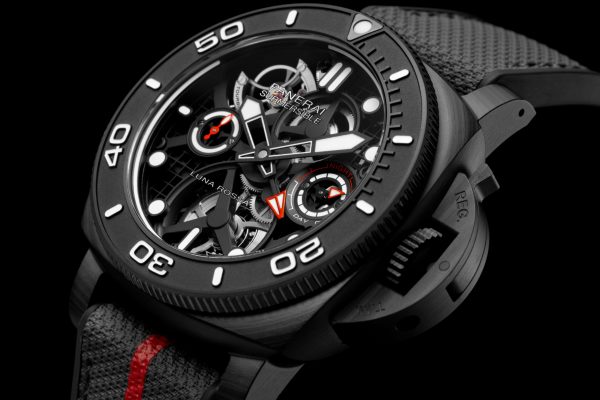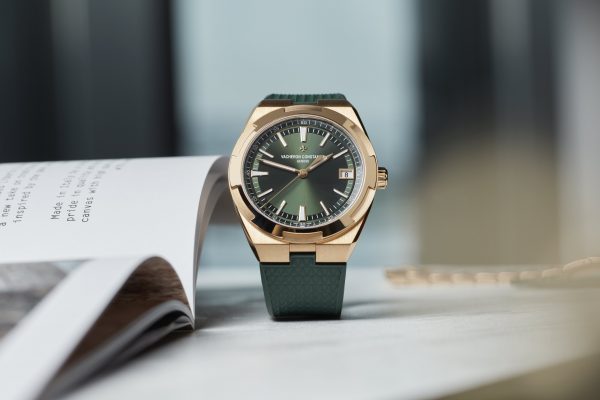#style / #watches & #jewellery
TAG Heuer CEO Jean-Claude Biver Talks Past, Present and Future of Horology
BY #legend
July 7, 2016
There are industry experts, and there are industry giants. Jean-Claude Biver belongs to the latter. He started his career at Audemars Piguet, and later played pivotal roles at Blancpain, Omega and Hublot. Today, he’s the head of the watch division at global luxury conglomerate LVMH, as well as CEO of TAG Heuer. #legend caught up with Biver and talked about the past, present and future of horology.
TAG Heuer recently concluded the the Autavia Cup campaign, in which users were able to vote on a historic Autavia model to reissue. What was the rationale behind that initiative?
First, I think the Autavia is a historic piece. Very important piece. It has given direction to TAG Heuer. The influence is still there today. I said, as we have the Monaco, as we have the Monza, I would like to make a revival of the Autavia. But the Autavia is one of the most esteemed watch of TAG Heuer collectors. TAG Heuer collectors have a special feeling for the Autavia. When I talked to Jack Heuer, he confirmed, and he said to me, “the Autavia was an important step in the development of the brand.” But I looked at the Autavia and I found Autavia this, and Autavia that. The Autavia was changing. So I said, maybe, before we decide with our own eyes, and my own taste, I should decide with the eyes of the people who maybe know better than me, which is the collectors’. Then my social-media people said, “You know what? Let’s ask the community.” It was not my idea, it was their idea. And I said wow, that’s fantastic. For the first time, we will use social media to bring an input. Let’s give them the choice and let them vote. But slowly, while they were voting, we were taking away, like in football elimination, and at the end there were only two left, and it was the Johan Rindt that won the majority of votes by very few. Two or three hundred was the difference. So now we have an Autavia where I know that the majority of the collectors are behind it. And I know it will be right, because I can be wrong, but 40,000 collectors cannot be wrong. That was the whole idea behind it.
How did the result compare with what you had anticipated?
I swear, my watch from the beginning was No. 2, and it had only two or three hundred voices less than the winner. I was the closest. And I said to my people, because I wrote it down, I said, “this is my choice,” and we wanted to see if my choice was close. It was No. 2. Maybe if we would’ve waited more, it could have caught up.
What has TAG Heuer learned from this exercise?
We have learned a lot. We have learned to listen to collectors. Many brands are not listening to their collectors because they believe that they know better than the collector. I have learned that I’m quite close to them, because my watch was No. 2, so I’m not so far from the reality. Nevertheless, I think, with today’s social media, it should not only be a promotion for the brand, it should also be an input. In that sense, this type of an experience, we want to develop.
What about the connected smartwatch, what was the rationale behind that?
Because we are Swiss avant-garde, it’s written somewhere here. If you are Swiss avant-garde, you already have an obligation to be avant-garde, not only when you were born in 1860 but also today. How can you be avant-garde today in the Swiss watch industry? By doing a connected watch, the typical avant-garde watch of today. That’s the first reason. Second reason: we have a price range, TAG Heuer, that starts at $900 then goes up to $6,000. But at which price range do you find connected watches? You find connected watches from $300 to the Hermes Apple watch at $1,500. If we have a price starting at $900, our price range between $900 and $1,500 can be competed by the connected watch of other brands. Shall we do a connected watch in this price level to protect us, or shall we let it open and let other people sell an Apple watch instead of a TAG Heuer? So we said no, we must also do a connected watch, provided it can be, maximum, $1,500. And that’s the second reason. So the Connected watch is a way to protect our price segment so that we can offer a connected watch so that people don’t have to buy from Samsung or another brand, if they want a connected watch. And as we are targeting the new generation, young people, young people are typically the ones that like the connected watch. So we should offer them the possibility of having a connected watch from our brand. But I wanted to be in the price level that is affordable, and $1,500 is a lot of money, but it’s still more or less affordable.
Personally, you’re known to be a great collector of high-complication watches. How does this factor into your function as TAG Heuer CEO?
For me, the fact that I could enter a new price segment, TAG Heuer, or a new watch concept, like the connected watch, is just an enrichment. I became richer because now I know more than before. Before, I never was concerned about the $1,000 watch. I was never concerned about the connected watch. And I would never have been. Thanks to TAG Heuer, I have enlarged my knowledge, my experience, and in that sense, I am very pleased that at 67 years old, I can still have a new adventure. I can still explore a new world, which I didn’t know before. And I must say, I’m wearing a connected watch, and I never thought I’d wear a connected watch. And I love it. I think it’s useful, it’s fun, it’s alive. The watch talks to me, I talk to the watch. I have a real relationship with it. I think I’m a privileged man to be able to work with the connected watch.
Taking the new tourbillon chronograph from TAG Heuer, which is priced very competitively against other watches of the sort in the market, as an example: Is this a way to be making complications available to a new price segment?
It’s combining high horology with the methods of producing, development and assembly of the 21st century. Most of the tourbillons that exist today, even the ones from Hublot or Blancpain, are all coming from concepts of the 20th, or even 19th, century. And that’s O.K. That was what we were supposed to do. And that’s what we did. We said we had to repeat tradition. Now, with TAG Heuer, we have decided not to repeat tradition. To repeat tradition as an end result, to have a tourbillon chronograph, chronometre, yes, but not with the same methods. Can we not use the same way to design the movement? Can we not have less intervention from the watchmaker? Can we not have other tools to produce? Can we not use other materials? Can we not use other machines? Yes, we can. So try and forget the history. Make me a tourbillon, but only with the vision of the 21st century, with the materials of the 21st century, and with the tools of the 21st century. And they came out and they told me, “If you really want, Mr. Biver, you will be amazed, that is the price we can reach.” I said, “What? That price? It’s shit. It will never work.” “Yes it will work. We can prove to you that each watch would even have chronometre certification.” I said, “a chronometre certificate on a tourbillon? Nobody has it.” “Yes, every watch will be.” I said, “If that’s the case, then do it.”
Is this the direction TAG Heuer is headed in terms of complications?
There are certain movements that are easier to produce with the tools of the 21st century. The minute repeater is the typical movement that whatever century you are in, you will never escape the number of hours of a human being, and that’s what’s cost effective. So the minute repeater is probably one of, eventually, the only movement of the traditional watchmaking masterpieces that whatever century you live in, cannot be more industrialised or made differently than it has been in the past. That is why it is, today, the summit of watchmaking art.
So no minute repeaters at this price point?
As soon as we could, we would, but it’s impossible.
You’ve worked with a lot of iconic sports watches over the years, including the Royal Oak and the Big Bang. In this day and age, what makes for a great sports watch?
I think the Carrera, invented by Jack Heuer in 1962, has the potential to be the iconic watch of TAG Heuer. That is what I am working on. I want the Carrera to become the definite strong iconic watch of TAG Heuer. It has the past, it has the present, it just has to have the future. That is why the Carrera Connected has the same lugs as the Carrera 01. This is the direction. This type of look should be the iconic watch of TAG Heuer.
Sports watches in steel were not readily accepted back in the day. The Royal Oak, for instance, was not an immediate hit, but the Big Bang was. What was it about the eras that accounted for the difference in reception?
Lifestyle. People are dressing differently. People are driving other cars. People are also working with Nike shoes. The whole lifestyle has changed. And the lifestyle is now more directed to a Royal Oak or Big Bang than an ultra-slim Blancpain. It’s just a question of lifestyle. Both are still beautiful, but it all depends on the way you dress. If you’re a banker in Geneva or London, you may have a very fine dress watch from Vacheron or Patek because it suits the way you dress. The lifestyle is now different. And because of the change in lifestyle, steel watches are better accepted; titanium watches are better accepted. Lifestyle is now more sporty. Sport has taken a huge presence. People did not do much sport 50 years ago. Fitness clubs, there was maybe one in Hong Kong. Fifty years ago, very few hotels had fitness clubs. The whole world has changed, and it’s becoming more sporty, which has of course driven the sales of sports watches.
Is lifestyle also the reason behind the explosion of watch sizes?
When I started at Blancpain, the biggest watch was 33 mm, in 1982. When we started at Hublot in 2004, it was 45 mm. In 22 years, the basic dimension went from 33 to 45. This is linked to the lifestyle. If you are dressed in a sporty way, if you behave sporty, if you have a very small watch, it doesn’t fit your wrist.
Is there a bubble in watch sizes? A watch can only be so big.
What was a bubble was what was above 44 mm. That came back. The 48, the 50, all these came back. I think we’ve stabilised at between 40 and 44. I think we will not go any smaller than 40. I think the average is now between 40 and 44.
So you think watches at 36 mm or so are for smaller segments of the market, not for a wider audience?
Yes. That’s also why you can see at auction, when a watch is 33, 34, 36, it has less demand than watches that have 38, 40 or 42.
How have expectations of aficionados changed through the years?
The aficionados, when I started, we had a hundred times less aficionados. When I started, watch collectors were an ultra small community. When I started, if you checked how many specialised magazines were written about watchmaking in the end of the ‘70s, maybe you would find 10 in the world. Now you have 10 per country. So that shows you the expansion of the number of aficionados, which has really grown the number of forums. The watch industry has exploded, and with the explosion of the watch industry has come the explosion of the fans and the aficionados. The community is totally different today compared with 20 years ago.
What are they looking for in a watch these days?
People are much more conscious about movement, the in-house movement. People are less naive. People are more educated, thanks to all the bloggers, the journalists, the specialised magazines. The level of comprehension is much, much higher.
What are the key challenges in the watch industry? Are smartwatches making a dent?
No, the connected watch is a promotion, indirectly, for the mechanical watch. Two or three years ago, many young people were wearing no watches. They had the phone. Now, with the connected watch, they start to wear again something on their wrists. And when you’re used to wearing something on the wrist, it’s easier to sell you the next step, which means wearing a real watch that is handmade. It’s easier, rather than to start to promote to someone who has never worn a watch. You see it with TAG Heuer, the connected watch is promoting for us, the mechanical TAG Heuers. It’s kind of an asset. We need to educate people. We need to keep the status symbol. We need to go on telling people that they wear eternity when they have a mechanical watch. You have something that will never die, that will never become obsolete. You have mechanical watches that are 100, 150 years old and they still work. This is what we have to teach. We have the role of keeping the community alive, of telling people that you have to wear something that keeps you status, something that you can keep for eternity, and you must be aware of the beauty. We must keep people watch conscious.









